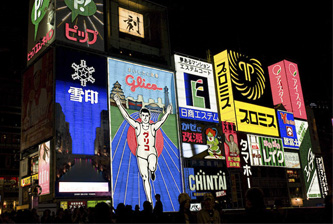LEGENDARY JAPAN: A PHOTOGRAPHIC JOURNEY With documentary photographer Magdalena Sole |

LEGENDARY JAPAN: A PHOTOGRAPHIC JOURNEY
Ever seen hundreds of Jizo statues, stayed at a temple, or wondered how a pilgrimage trail has compelled people for over a thousand years? Have you washed away the day’s fatigue in a soothing onsen that is also a World Heritage Site?
Have you smelled Kimchi in the air of a Korean market, or witnessed the bright lights of downtown Osaka? Have you visited a traditional craftsman and National Treasure in his very own thatched-roof workshop? Have you seen a moss garden, or waited for a Geisha to quietly rush from one establishment in Gion to the next?
If you ever wanted to venture further with your photography than what meets the eye, if you are curious and interested in cultural experiences different from your own, then join us for our fall photographic journey in Japan.
INTRODUCTION
Japan is vibrant and colorful. It is a country where the traditional and the modern collide. Where age-old customs and rituals survive, while the brash thrust of modernity continues to hurtle forward, as evidenced in its neon-lit, concrete cityscapes. Time-honored Japanese traditions, including sumo wrestling, tea ceremony and meditation, are still prevalent practices, but Japan is also a breeding ground for cutting edge subcultures and bold and bright street fashions. With such a multifaceted culture, encompassing so many different aspects, Japanese culture resists easy definition; it has to be experienced from the inside.
On this photographic journey, not only will you get to observe the uniqueness and many contradictions of Japan, but you will also photograph life close-up. Documentary photographers will find interesting backdrops, events and subjects around every corner. The locations visited during the photography journey, which range from ancient mountaintop pilgrimage sites to the steel and the concrete metropolis of Osaka, will be an abundant source of inspiration and will provide photographic challenges to help participants hone their skills.
ITINERARY
October 18 – 20: Osaka (Click for details)
The photo journey begins in Osaka. You will arrive on October 18 and will start exploring the sights the following day.
As one of Japan’s main business centers, Osaka is a busy and much-developed metropolis. This high-rise concrete center plays host to many of the world’s most familiar multinational companies. Yet, as you will see during this photographic journey, this corporate image is only one small part of Osaka’s identity; the city has many more facets. Having been inhabited for more than 1,500 years, it also has a significant history, boasting impressive monuments including the formidable 16th-century Osaka Castle. This dazzlingly white multi-tiered fortress still stands in Osaka and is set amid an impressive urban park that, during autumn, is awash with fiery red-orange foliage. At the same time Osaka is culturally very distinct from the rest of Japan, home to many different minorities and unique customs.
The city is also famous as a destination for food lovers, and good cuisine is easy to find here. Even the fuss-free street snacks, including octopus dumplings, battered and deep-fried meat skewers and okonomiyaki (savory Japanese pancakes), are of a high standard.
During your time in Osaka, you will document some of the city’s most interesting neighborhoods, where photographic opportunities abound. Take in the sights of Osaka’s Korean Market and capture the flurry of action as you point your lens at the labyrinth of stalls. This sprawling maze of shops and stands caters to Osaka’s sizeable Korean population and sells everything from Kimchi and Bibimbap, to imported k-pop trinkets. As the hustle and bustle of the market swirls ceaselessly around you, wait to capture the perfect moment.
You will also have the opportunity to see the Ebisu Bridge, a prime people-watching spot with a colorful backdrop: a patchwork of neon advertisements plastered on the surrounding buildings. There will also be opportunities to photograph some of the city’s nightlife. Finish up the day by sampling some of Osaka’s famous cuisine over dinner in Tennoji, home to the traditional downtown area of Osaka and the Eiffel Tower-inspired Tsutenkaku Tower.
Overnight at Hotel Hokousou or similar
October 20 – 22: Osaka — Mount Koya (Click for details)
Leave Osaka and travel south to Mount Koya, a sacred mountain site located in a peaceful rural area of Wakayama Prefecture. Set in an epic natural location high above the cedar-covered valleys and surrounded by forested mountain peaks, this monastic complex is one of Japan’s holiest sites and the headquarters of the Shingon Buddhist sect.
While at Mount Koya, not only will you get to explore the monasteries of Koya san, but you will also get to follow in the footsteps of ancient pilgrims. With a camera in hand, trek along ancient pilgrimage trails that lead up the forested slopes. You will stay overnight in a traditional temple lodging, one of several dotted around the hills. Gain insight into age-old traditions as you lodge with the monks, witnessing their meditation and prayer ceremonies — rituals that date back a millennium and often more.
While exploring the sacred mountain complex and its surroundings, get tips on how best to approach photographing quiet moments, while remaining respectful of the sacred sites. You will also receive practical advice on expanding your photographic technique by reviewing the grammar of photography.
Overnight at Hotel Rengejyon or similar
October 22: Mount Koya — Yunomine (Click for details)
Leave Mount Koya by private bus and depart for Yunomine, a small and quaint village tucked away in a valley amid the forested emerald slopes. Yunomine is home to some of the oldest hot springs in Japan and the isolated town is built around these bubbling pools. In the past, weary pilgrims would have stopped here and performed water purification rituals in the piping springs en route to worship at nearby sacred sites. While here, you can bathe in the onsen and use them to rest and rejuvenate. Tsubo-yu, the famous onsen in the center of town is renowned for being the oldest hot spring in Japan and the only hot spring bath that is also a UNESCO World Heritage Site. Onsen play a central role in Japanese culture and they are still commonly used as a gathering place for friends, as well as for their health benefits. Spend a leisurely night in this secluded hot-spring resort.
Overnight at Hotel Yoshinoya Ryokan or similar
October 23: Yunomine — Kumano Kodo — Kyoto (Click for details)
Today, you will discover another of Japan’s sacred mountain sites, and walk along the UNESCO-listed Kumano Kodo. The Kumano Kodo is a series of ancient pilgrim routes that crisscross the Kii Hantö, the largest Peninsula of Japan, connecting Mount Koya, the Three Grand Shrines, and many other important holy sites.
Our bus will leave us off at the trail head in the Kii Mountain Range, marked by a little shrine from were we will begin a half day modest hike along the millennium old sacred pilgrimage trail of the Kumano Kodo. We will walk through cedar forests, see mountain ridges, old villages and farmhouses along the way. The path will lead to the Kumano Hongu Taisha shrine, one of three grand shrines in the Kumano area and a stunning example of Japanese shrine architecture. Like many of Japan’s shrines, it was built using no nails and instead is propped up through meticulously fitted and labor-intensive joint work. After admiring the tranquil environs of the grounds we will take a short walk to the Hosshinmon-oji gate. Known as the “gate of awakening of the aspiration to enlightenment”, it marks the threshold to the divine precincts of Kumano, which are set in the most awe-inspiring natural setting. As evening falls, we will travel north by bus and train through the mountains and along the sea to reach Kyoto.
Overnight at Hotel Gimmond Kyoto or similar
October 23-28: Kyoto (Click for details)
Kyoto, the ancient capital, is a photographer’s dream. Home to more than 2,000 remarkable Shinto shrines and Buddhist temples, just a little exploration here can turn up an abundance of photographic opportunities. There are shimmering gold pavilions, robed monks, calming Zen gardens, narrow cobbled streets lined with old wooden houses juxtaposed to a modern, dynamic and sprawling city.
During four days in Kyoto, you will have the opportunity to visit the Tenjin-san flea market, a monthly event that sees as many as 1,000 vendors set up shop at the Kitano Tenmangu shrine to sell everything from antiques to food. You will also get to visit the UNESCO World Heritage-listed Kokedera temple, famous for its exceptionally beautiful moss garden — the design for which dates back to 1339. Though not big, the garden is ethereal and especially beautiful after rain when the sun casts its dappled light on the glistening moss-covered surroundings. With entrance numbers restricted here, it makes a quiet and intriguing place to shoot, or just to spend some time reflecting.
On the third day in Kyoto (October 26), leave the city for a day and travel to the countryside outside Kyoto to visit a National Treasure, Japan’s famous indigo textile artist Hiroyuki Shindo. Located in a quaint village of thatched-roof farmhouses, you will visit Shindo’s workroom and gallery, which offers insight into the practice and the work of this highly acclaimed and respected indigo dyer and artist. After exploring the studio, you will have the chance to capture images of traditional village life in the surrounding thatched dwellings.
Spend the final day in Kyoto exploring the Gion district, a remnant of Old Japan. This neighborhood is home to one of Japan’s few surviving geisha districts. Geishas can still be seen hushing from one establishment to another in the narrow alleys in their vivid and elaborately draped kimonos. With numerous traditional teahouses, historic buildings and busy people-watching spots, you can capture timeless and evocative scenes of traditional city life in the old imperial capital.
Overnight at Hotel Gimmond Kyoto or similar
October 28: Kyoto to Osaka Itami Airport (Click for details)
Leave Kyoto for departure from Osaka Itami Airport.
WHO SHOULD ATTEND?
This class is for photographers of all levels.
REQUIREMENTS
Each student is responsible for bringing their own camera and equipment, including a laptop.
- $5,795Per person double occupancy
- .
- Add $495 for single occupancy
- Includes expert leader, accommodations, internal transportation, all breakfasts, 3 lunches, 4 dinners, entrance fees to all monuments, museums and more per itinerary
- American citizens don’t requiere a visa for tourism purposes. If you are a citizen of another country, please check visa requirements www.visacentra.com
- TRIP DURATION: 10 Nights/11 Days


